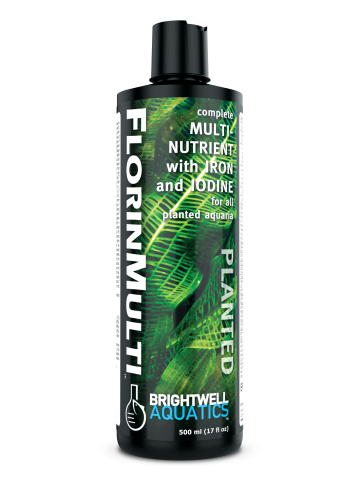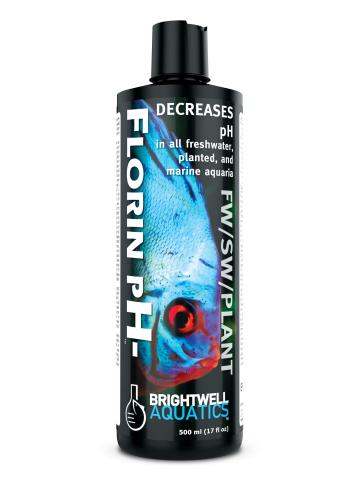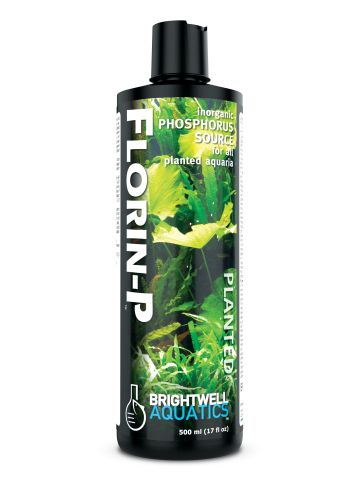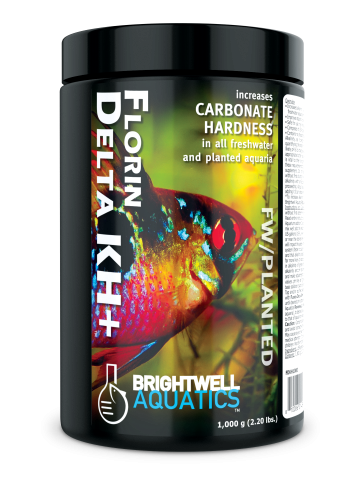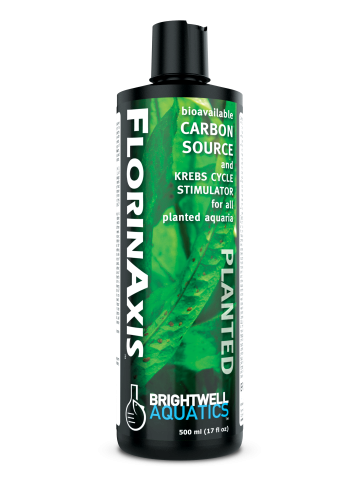Florin-K
Concentrated Potassium Source for all Planted Aquaria
Overview
- Concentrated source of high-purity potassium, required by plants for enzyme activation in a number of biochemical reactions.
- Stronger than most competing products.
- Formulated utilizing extensive research on aquatic plant nutrient requirements.
Sizes
- 125 ml
- 250 ml
- 500 ml
- 2 l
- 20 l
Technical Background
Potassium is one of the most important elements for plant growth and health; it is utilized in photosynthesis, maintaining ion (charge) balance, in the translocation of important organic and inorganic compounds (such as sugars and nutrients, respectively), and it is essential to many of the biochemical reactions taking place within plant tissues, as is evidenced by the relatively high percentage of plant tissue that potassium accounts for (second only to nitrogen). The affinity that a given species of plant shows for potassium may be partially dependant upon that species’ tendency to flower and form complex root systems (both of these correspond to greater potassium requirements than in bunch plants or those that rarely flower, per unit mass). Environmental factors such as light intensity and duration, and the presence of other nutrients in adequate concentrations, may also influence potassium requirements.
Because potassium is utilized in photosynthesis, a deficiency can lead to chlorosis, in which insufficient chlorophyll is produced and the leaves become pale; if not remedied, the plant may suffer extensive tissue decay (chlorophyll is utilized in the production of new tissue) and eventually perish. Chlorosis is likely to appear first in the older leaves of the plant, which tend to be on the periphery. In addition to potassium, magnesium, iron, and nitrogen are important to chlorophyll production. Maintaining a total iron concentration of 0.05 – 0.10 ppm, and magnesium concentration of ~5 ppm, is generally sufficient; nitrogen should primarily be present as nitrate at a concentration of less than 20 ppm. The required concentration of potassium may vary in different aquaria; it is recommended to begin by maintaining the concentration at approximately 15 ppm for the first week and adjusting the concentration by 1 – 2 ppm every two weeks as the appearance of the plants dictate; the recommended upper limit for potassium is approximately 30 ppm. The rate at which potassium is extracted from the water is largely dependant upon the rate of plant growth, therefore densely-planted systems with optimal chemical and environmental conditions are likely to require regular potassium supplementation.
Brightwell Aquatics Florin-K is a high-purity potassium supplement, and is free of chloride (while chloride is a vital element to plants, it is required in a very small concentration, provided in Brightwell Aquatics FlorinMulti). Because the potassium requirement of aquatic plants is high relative to that of other nutrients, Florin-K is very strong (50,000 ppm), making it an effective and economical potassium source.
Instructions and Guidelines
Shake product well before using. The most effective method of using any ion-specific supplement is to determine the ionic concentration in the aquarium prior to supplementing. Maintain the potassium concentration within a range of 15 – 30 ppm; 20 – 25 ppm is a more narrow range, and one that will likely be extremely effective in most planted aquaria.
Basic: Add 5 ml (1 capful) of product per 50 US-gallons (189.3 L) of aquarium water every other day or as required; this corresponds to 1 ml (~8 drops) per 10 US-gallons (37.9 L). When used in this fashion, 250 ml treats up to 2,500 US-gallons (9,464 L).
Advanced: Determine the potassium concentration (“[K+]”) in the aquarium using an accurate test kit before supplementing. Each ml of Florin-K will increase the [K+] in 1 US-gallon (3.785 L) of water by 13.2 ppm. Each drop (250- and 500-ml cap) will increase the [K+] in 1 US-gallon (3.785 L) of water by 1.7 ppm, and the [K+] in 20 US-gallons (75.7 L) by 0.08 ppm. If the initial [K+] in the aquarium is below 15 ppm, add this product at the maximum rate of 1 ml per 5 US-gallons daily until the desired concentration is attained, then dose daily or weekly as needed (see below). Always attempt to maintain the [K+] within a range of +/-2 ppm. To determine the dosing rate of this product once the desired [K+] has been acquired, measure the daily rate of potassium uptake (i.e. the decrease in potassium) in your aquarium by measuring the aquarium’s [K+] at the same time each day over a one- to two-week period. To determine the daily dosing rate (preferable to weekly dosing) for potassium maintenance: estimate the volume of water in the entire aquarium system; divide the daily decrease in [K+] by 13.2; multiply this number by the volume of water in the system to get the daily dosage required (ml) to maintain a stable [K+]. Daily dosing maintains a more stable [K+] (and more natural environment) than dosing weekly, in which the [K+] spikes just after dosing and then gradually decreases throughout the course of the week.
Caution: Keep out of reach of children. Not for human consumption.
Guaranteed Analysis (minimum)
0-0-6; Potassium (K) as Soluble Potash (K2O) (min) 6.00% (1,479 mg/oz.; 50,000 ppm)
Sources of Nutrients: Potassium sulfate
Other Ingredients: Purified water.

